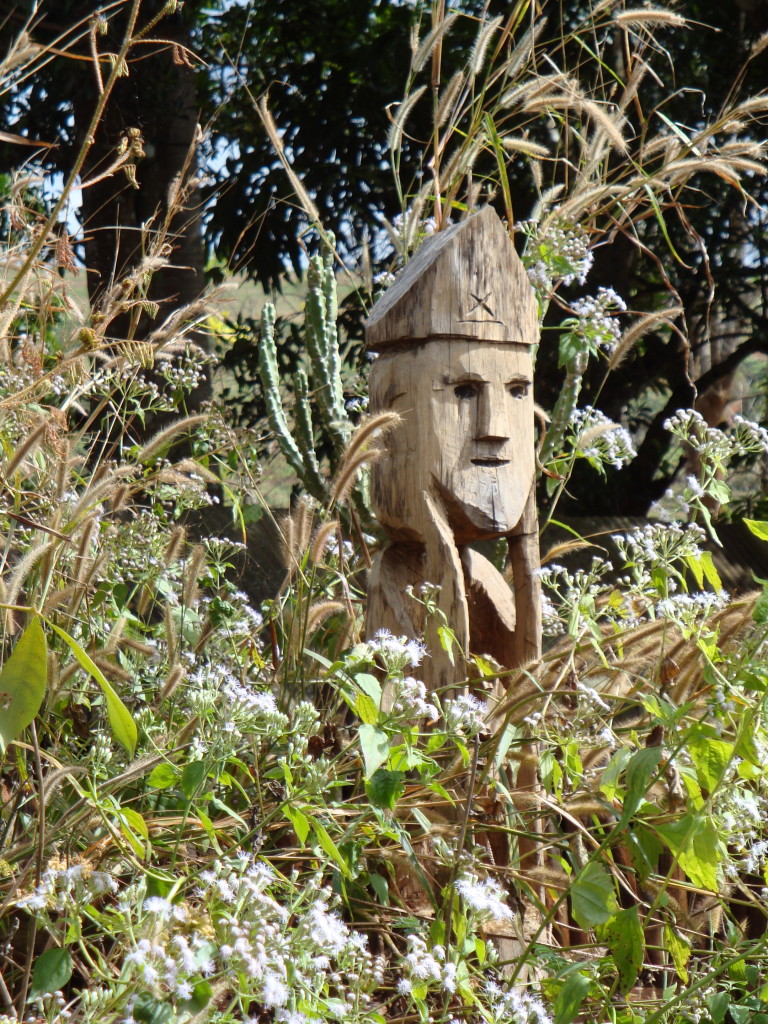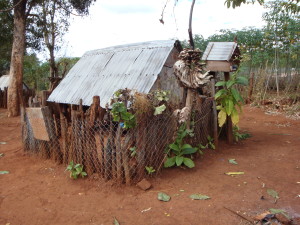Jarai Gravesite Guardian Spirit-Posts, Or
What You Won’t Find At Our Sale
They were hardly visible – just an aged, gray stump sticking up amid the tall grass, on the shadow’s edge of a lush and untended grove of trees.
Our guide, clad in a black business suit – daily business wear for office owners in Kontum, Vietnam – caught his breath. “And this…” he puffed, “This is where some of my ancestors are buried.” He took a white handkerchief from his rear pocket and wiped the beads of sweat from his face.
There was no breeze; some insect droned from the still trees. The sun felt heavy. Our guide tipped his hand to usher us forward. We slipped through the natural hedge on a thin path and a small village of haunting wood-carved spirits leaned in.
Traditional Jarai tombs are small huts that hold the possessions of the deceased and some offerings to appease the spirits. Wooden pillars topped by haunting carvings, representative of spiritual guardians, overlook each grave site. Traditional Jarai burial ceremonies are extremely expensive (involving many water buffalos and cows), and it may take a family many years to afford the proper burial rites for a loved one. The graves are well-tended until the ceremonies are competed. After the final ceremonies, and after enough time has passed, the tombs are abandoned. The final abandonment ceremony marks the point where death becomes final and the deceased spirit is released. Nature then runs its course with the carvings.
Teak wood, like cedar, takes long to decay, but the regular rains and heat of the region etches its influence upon the site. Each guardian is for each ancestor, and they to continue to be shaped by time and memory. A soul and a teak log can each take generations to dissolve.
But here, now, in this Jarai village of spirits with our guide and the sun is a moment of timelessness (and it’s just a moment). Are the spirits still here? Can there really be a hundred years between a yesterday and a tomorrow? What is of our memories…
We have seen these posts for sale in tourist-focused shops that seek “western-sized” pockets. The posts often still have a rotted, earthen stump, proof of being uprooted from its vigilant role. Stacked in a corner of a shop, they look lost – and even older. The more shaped by time, the more valuable. The more determined the features, the “better.” The bigger, the more.
Each guardian in the shop leans: defeated, exiled. How could one remove such a treasure of time and memory, upsetting the order of decay? Such items command the respect inherent in their purpose.
Some things are not meant to be traded or owned.





